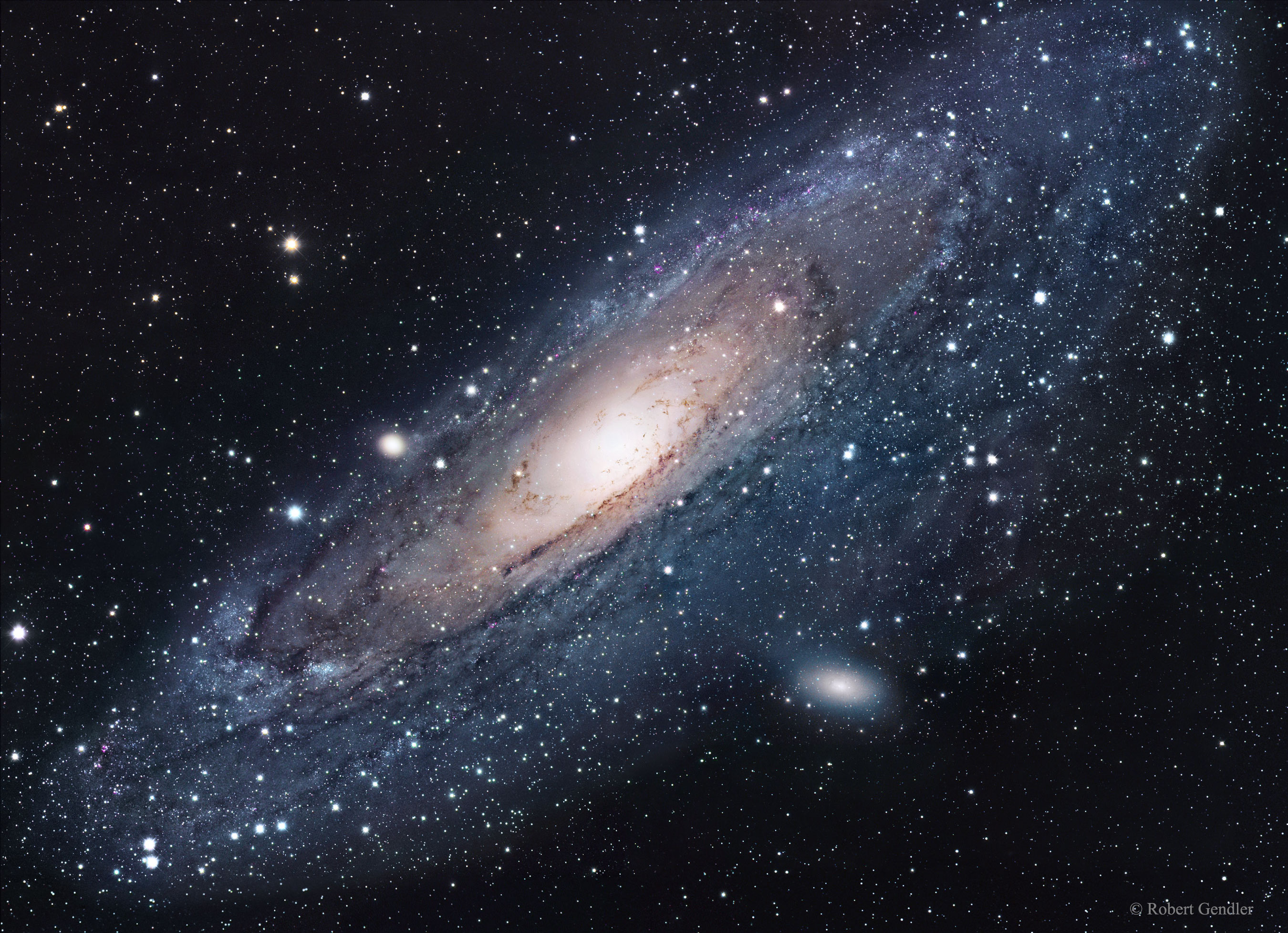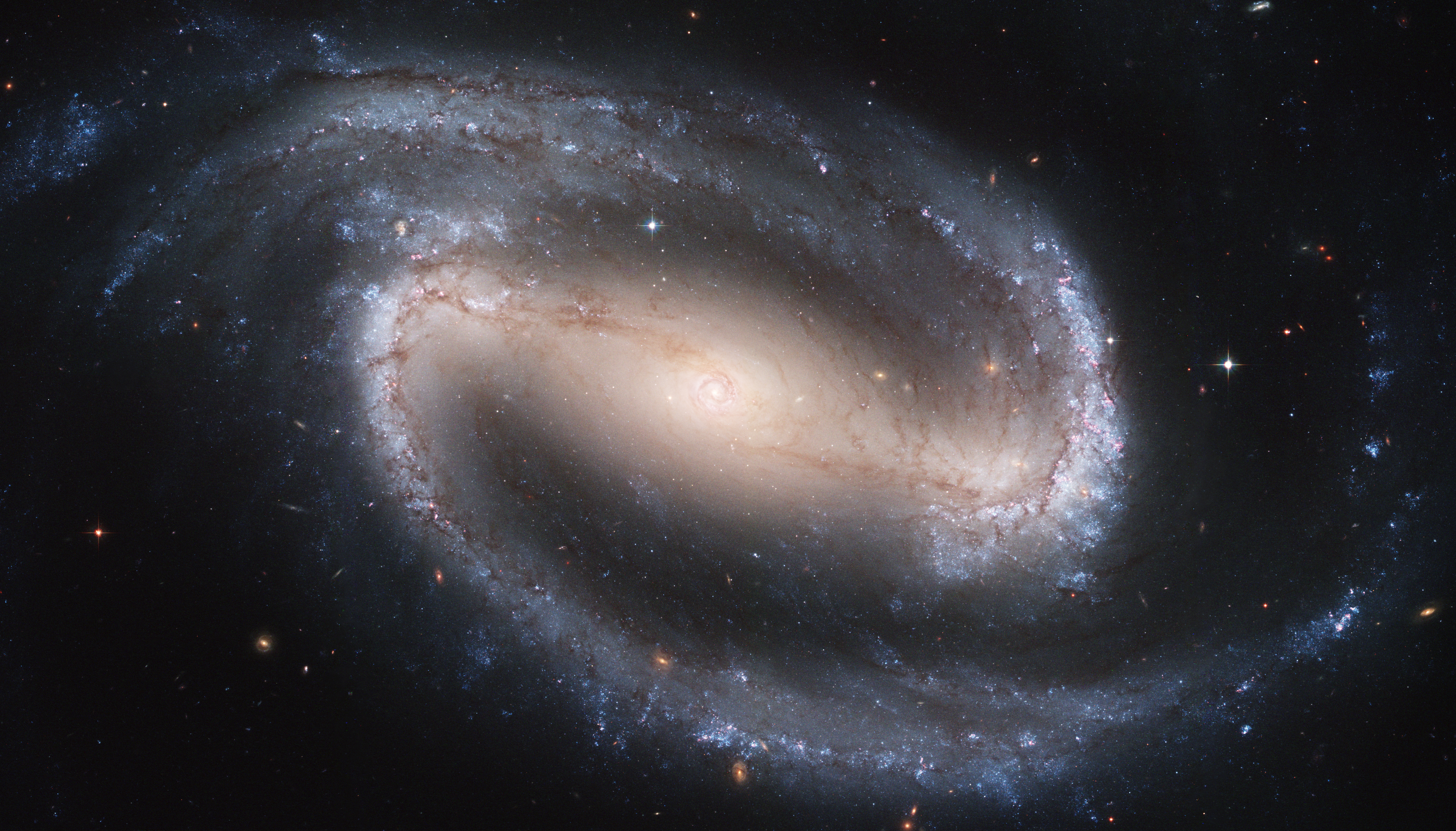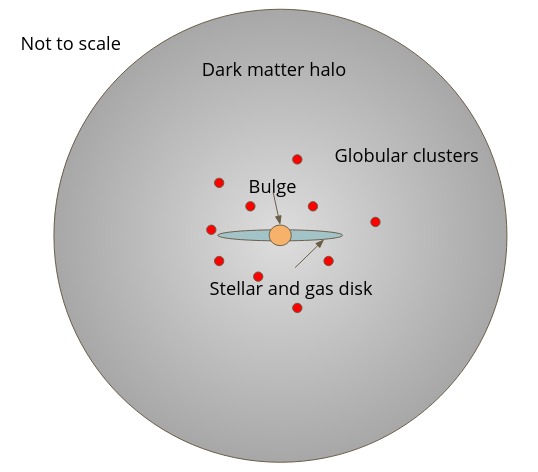[1]:
from IPython.display import Image
from IPython.display import Video, HTML, YouTubeVideo
width = 600
Introduction to Galaxies¶
Galaxies are composed of many billions of stars and are tiny islands in this vast Universe. The story of our understanding of galaxies is quite new. About a hundred years ago, there was little clarity on the nature of galaxies themselves. Astronomers knew quite a bit about our own galaxy through star counts.
When astronomers looked at the night sky with telescopes to find stars, planets and comets, they came across fuzzy patches in the sky. They called them nebulae, and catalogued them, so as to not confuse them with comets. As is often the case, these nebulae turned out to be interesting in themselves. In 1920s there was a great debate between two astronomers: Harlow Shapley and Herber Curtis, about the nature of these nebulae, and the size of the Universe. A summary of the debate can be found in the wikipedia article and the website linked here
As you can read, this scientific debate was informed by astronomical observations and each side made the case for their point of view. Science often proceeds in ways that can be complicated. But observations (and their confirmations) are crucial to help understand scientific facts.
Galaxies:¶
Galaxies are quite pretty to look at, here are a couple of very famous galaxies. First an example of a spiral galaxy:
[2]:
Image(url="https://apod.nasa.gov/apod/image/1812/m31_gendler_2700.jpg", width=width)
[2]:

This galaxy is M31. It is a sister galaxy to the Milky Way. We can see stars arranged in a disk, a very prominent central concentration of stars, a number of dust lanes within the galaxy. The spiral arms in galaxies like M31 are the sites of intense star formation. We can also see that M31 also has a companion dwarf galaxy (M32) which is quite close.
Next let us look at an example of another spiral galaxy (NGC 1300).
[3]:
Image(url="https://upload.wikimedia.org/wikipedia/commons/5/52/Hubble2005-01-barred-spiral-galaxy-NGC1300.jpg", width=width)
[3]:

The galaxy NGC 1300, has a big bar like structure in the middle, and such structures can be present both in stars and gas. There is evidence that uur galaxy, the Milky Way, also has such a bar like structure.
Now let us look at an elliptical galaxy.
[4]:
Image(url="https://space-facts.com/wp-content/uploads/m87.png", width=width)
[4]:

This galaxy is M87. It looks like a fuzzy collection of stars. Such galaxies are called elliptical galaxies. There is something funny going on at the center of this galaxy. One can see a nice jet coming out of center of this galaxy. This jet At the center of this galaxy is a massive black hole. It was recently in the news because radio astronomers made the first image of the black hole which lies at the center of this galaxy.
And then a dwarf irregular galaxy:
[5]:
Image(url="https://subarutelescope.org/Pressrelease/2004/02/23/SextansA_200.jpg", width=width)
[5]:

This galaxy is Sextans-A. It is a dwarf irregular galaxy. Because it is so faint and diffuse it is quite hard to find such galaxies. This particular galaxy lies in the outskirts of our local group of galaxies. It is hard to say whether this galaxy is a satellite galaxy within our local group. The dwarf irregulars are typically rich in their gas content.
You can read more about these galaxies on wikipedia: M31, M87 and SextansA.
Galaxies form a quite diverse population. They do not all look the same, their formation and evolution mechanisms are also quite likely quite different. What sort of different questions come to your mind after seeing some of these images?
Galaxies : Formation¶
In our current understanding of the Universe, ordinary matter which makes stars shine, constitutes only a small fraction (about 15 percent) of the matter density of the Universe. The rest is made up of dark matter. The total matter content forms only about 30 percent of the energy density budget of the Universe, today. The rest is in the form of a mysterious component called dark energy, and miniscule amounts of radiation components. The Universe is not static and all physical distances change with time. The rate of change of these physical distances is governed by the energy content of the Universe at any given time. This forms the cosmological context in which galaxies form.
The early Universe (at the start of the matter dominated era) is not uniform, but has small density fluctuations. These density fluctuations originate in the very early Universe and are a result of quantum fluctuations (and you will learn a lot about it in your cosmology course). These fluctuations set the initial conditions for structure formation.
The structure in the dark matter distribution grows due to gravitational instabilities and results in the formation of extended dark matter halos. Gas within the dark matter halos is able to collisionally lose its energy and concentrate towards the center. This leads the center of dark matter halos to form stars in a concerted manner and form galaxies. Galaxies, such as the Milky Way, have typical radii of the order of tens of kilo parsecs, where as the dark matter halos are 100s of kilo parsec in size.
[6]:
YouTubeVideo("8C_dnP2fvxk")
[6]:
A cartoon picture of a galaxy in a dark matter halo looks something like this.
[7]:
Image("images/halo.png", width=width)
[7]:

During this course, we will learn a lot about timescales of different physical processes which shape galaxy properties. But most of these time scales are very large compared to that of a human life. This implies that the evolution of galaxies cannot be studied by looking at just one galaxy eveolve over time. This is quite a difficult problem because identifying galaxies which are the counterparts of the galaxies that are observed at one epoch is not easy.
Galaxies are quite diverse, but their properties are quite correlated and they often obey tight scaling relations (we will study the origin of some of these scaling relations). The evolution of these scaling relations can then help us understand galaxy evolution as a whole as well.
Big questions¶
How do galaxies fit in the grand scheme of the Universe?
Can they be described by the same laws of physics that we know of in the solar system?
How do galaxies evolve?
Do galaxy populations obey any statistical properties as a whole and can we understand these properties?
Throughout these series of lectures we will try to apply some common concepts you would have already learnt in classical mechanics in order to understand the properties of these galaxies.
Exercises¶
Think about how you would find the shape and nature of our own galaxy.
Look for the period luminosity relation of stars called cepheid variables.
Gather data of the periods of Cepheid variables in the Andromeda galaxy (Edwin Hubble compiled this data first, there should be more modern tables) and hence deduce their luminosities
Figure out the distance of the Andromeda galaxy from the observed fluxes of Cepheid variables in Andromeda.
How can we measure the mass of our galaxy?